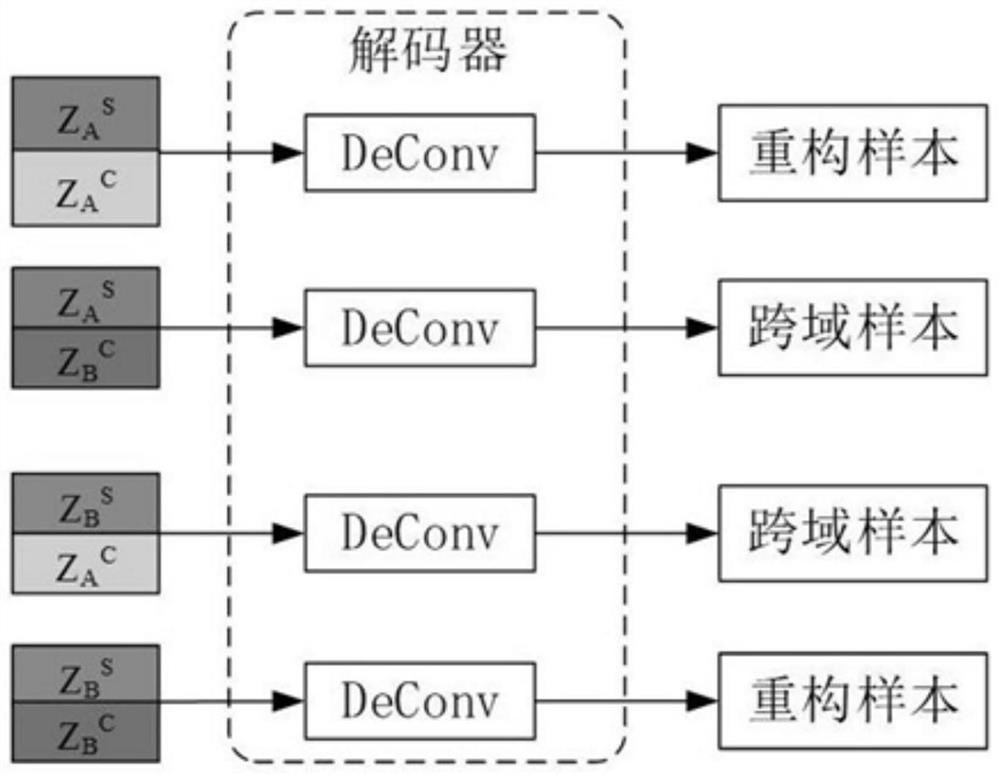A Cross-Domain Variational Adversarial Autoencoder Method
A technology of self-encoding and self-encoder, which is applied in the field of cross-domain variational confrontation self-encoding, and achieves good results
- Summary
- Abstract
- Description
- Claims
- Application Information
AI Technical Summary
Problems solved by technology
Method used
Image
Examples
Embodiment Construction
[0038] The present invention will be further described below in conjunction with specific examples.
[0039] The cross-domain variational adversarial self-encoding method provided in this embodiment realizes the one-to-many continuous transformation of cross-domain images without providing any paired data, such as figure 1 As shown in , showing our overall network framework, the encoder decomposes samples into content-encoded and style encoding Content coding is used for confrontation, and style coding is used for variation. The decoder concatenates the content code and the style code to generate an image. It includes the following steps:
[0040] 1) Use encoders to decouple content encoding and style encoding for cross-domain data.
[0041] Firstly, the content coding and style coding of the image are decomposed by the encoder, and the corresponding posterior distribution is obtained. For content encoding, an adversarial autoencoder (AAE) is introduced; for style encod...
PUM
 Login to View More
Login to View More Abstract
Description
Claims
Application Information
 Login to View More
Login to View More - R&D
- Intellectual Property
- Life Sciences
- Materials
- Tech Scout
- Unparalleled Data Quality
- Higher Quality Content
- 60% Fewer Hallucinations
Browse by: Latest US Patents, China's latest patents, Technical Efficacy Thesaurus, Application Domain, Technology Topic, Popular Technical Reports.
© 2025 PatSnap. All rights reserved.Legal|Privacy policy|Modern Slavery Act Transparency Statement|Sitemap|About US| Contact US: help@patsnap.com



